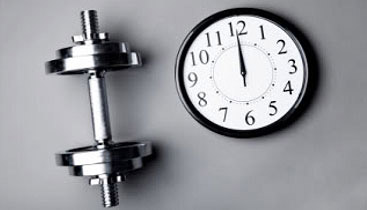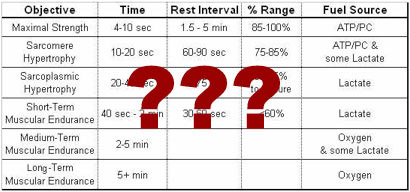IS TIME UNDER TENSION IMPORTANT FOR MUSCLE GROWTH?

Although the standard bodybuilding training approach has always been to perform each set by counting out a specific number of reps (for example, 5-7 reps or 8-12 reps per set), a relatively new approach known as “time under tension” has become quite popular in recent years.
What is time under tension?
Just like the name implies, time under tension (or “TUT” for short) focuses on the total length of time that each set lasts rather than worrying about any specific number of reps performed.
So, instead of aiming for, say, 8 reps in a given set, you might instead for a total “time under tension” of 50 seconds. Once the 50 seconds was up, you’d then discontinue the set regardless of how many reps you performed.
You’ll hear different guidelines depending on who you talk to, but in general, a total TUT of around 1-20 seconds is considered ideal for gains in strength, 30-60 seconds is optimal for hypertrophy, while 70-100 seconds or more is best for endurance adaptations.(Again though, these are just estimates and you’ll hear varying guidelines for this)
But is time under tension important for muscle growth? Should you stop counting reps and start counting time instead?

The short answer is that, while the total amount of time that your muscles spend under tension certainly does a play a role in achieving optimal muscle building results, it’s really not something that you need to bother worrying about.
Although you’ll see all sorts of set guidelines being given, such as “20 seconds for strength” or “60 seconds for hypertrophy”, these are ultimately just based on anecdote and personal opinion rather than on any sort of concrete, well-controlled research.
The concept of TUT certainly makes sense, but it’s not as if anyone actually knows for sure what the optimal time frames are for each specific training goal in the first place.

As long as you’re training somewhere in this range and are executing your reps using a fast/explosive concentric and a reasonably well-controlled negative, there’s really no need to worry about anything beyond that in terms of specific time frames.
You’ll likely land within the typical recommended TUT ranges for hypertrophy anyway, and even if you miss by a few seconds, again keep in mind that these ranges are just estimates anyway and are not confirmed by any concrete research that I’m aware of.

Not only is worrying about time under tension an unnecessary aspect of your workout plan, but it can also have potentially negative effects as well.
This is because setting up a stopwatch and performing your sets with an exact time frame in mind is actually quite distracting, and will ultimately take your focus away from the things that really matter, such as proper rep speed, intensity and a focus on progression in weight and reps.
On top of this, training with the goal of optimizing time under tension also typically causes lifters to intentionally slow down their rep cadence in order to make sure that they reach the minimum time requirement.
There’s no question that it’s important to remain in complete control of the weight at all times, but the research is fairly clear in demonstrating that taking a “super slow” approach to your lifting cadence is NOT ideal for maximizing hypertrophy.
The concentric portion of the rep (or the “lifting” phase) should be performed as hard/fast as possible while still maintaining proper form, and while the eccentric portion (or the “lowering” phase) should be performed under deliberate control, any longer than about 4 seconds is likely excessive.
Again, this is just another example of how focusing on time under tension can actually work against you rather than for you.
Is Time Under Tension Important? The Bottom Line

As long as you’re keeping your sets within the typical “hypertrophy range” of about 5-12 reps per set, are using proper rep tempo and are training around 1-2 reps short of concentric muscular failure, then you’ll automatically be landing somewhere within an acceptable TUT range (or close to it) regardless.
Not only that, but you’ll do so without the totally unnecessary hassle of having to setup a stopwatch to time your sets, and without diverting your focus away from the things that truly matter when it comes to stimulating muscle growth on any given set, that being:
1) Performing the exercise using proper form and technique.
2) Utilizing the proper rep cadence involving a hard/fast concentric and a controlled (but not overly slow) eccentric.
3) Training with a sufficient level of intensity by performing each set about 1-2 reps short of concentric muscular failure.
4) Focusing on improving upon the previous workout’s performance by either increasing the amount of weight lifted on the given exercise, or by performing additional reps using the same weight.
If you’re doing these 4 things on each set that you perform, then you’re already going to make awesome gains in the gym and there’s really no need to over-analyze things further.
Although “time under tension” is an interesting concept and certainly does come into play in the overall picture, it’s just not something that you need to concern yourself with.
If you found this article helpful, make sure to sign up for your FREE custom fitness plan below...




